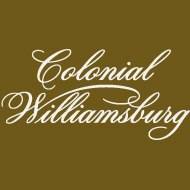So What Was It Like To Be LGBT In Early America?

By:
Most timelines of American LGBT history have one huge flaw.
The problem is that there is barely any mention of LGBT persons in America before the 20th century, even though it’s a fascinating history—particularly in early America. Here are four things you've probably missed:
1. Native Americans have long respected LGBT persons, referring to them as “two-spirit.”
LGBT persons were—and still are—considered blessed for possessing the spirits of more than one gender. Unfortunately, the influence of European settlers with strict, religious views eventually led to a less inclusive view of LGBT persons in Native American communities.
2. Early Puritan settlers created laws against sodomy and even executed people for participating in the act.
You may wonder why antiquated sodomy laws still exist, but it’s a part of our history.
Early American settlers were predominantly male and, as LGBT rights activist Larry Kramer theorizes, that probably meant some pre-colonial, same-sex relationships, although there is no proof of that. There is proof, however, that proto-United States communities actively shut out LGBT persons, setting into motion a history of anti-queer attitudes through anti-sodomy laws.
The same homophobic views that exist today can be found in the colonial bias against “buggery” (which is a funny way to refer to “sodomites,” which is a funny way to refer to LGBT persons). That said, some scholars argue that "sodomy" generally referred to all sexual activity that was not meant for procreation, regardless of whether it was homosexual or heterosexual. A group of historians made this point to the U.S. Supreme Court in 2003, saying that "[c]olonial sexual regulation included such non-procreative acts as masturbation, and sodomy laws applied equally to male-male, male-female, and human-animal sexual activity."
3. While there was a fair amount of bad, there was some good going against the grim.
Quakers and their “aversion to the shedding of blood” helped curb the execution of gay persons, exchanging the punishment with six months of imprisonment along with some whipping and loss of property. There is also documentation of early American queer couples, such as Sylvia Drake and Charity Bryant, whose early 19th century relationship suggests an acceptance of LGBT lifestyles. Similarly, the presence of Thomas / Thomasine Hall highlights a remarkably lax point of view in accepting gender variant individuals.
4. And then there was our first president.
George Washington was seen as the “gay-friendly pragmatist” who fought for personal freedom. He fostered a liberal military environment that overlooked same-sex acts in the service, a surprising fact that is the antithesis of the “Don’t Ask, Don’t Tell” that emerged in the 20th century American military. Yes, there were still penalties for being gay in the military, but Washington did not enforce them.
These parallel queer histories are absolutely vital as they show that America’s relationship with the LGBT community is much more complicated than current bathroom battles or even the fight for marriage equality.
On the bright side, in visiting historic, colonial spaces such as Colonial Williamsburg, you’ll find that this complicated history has receded, rewritten with acceptance and stands as a testament to how progressive we’ve become.


